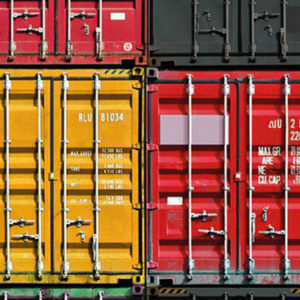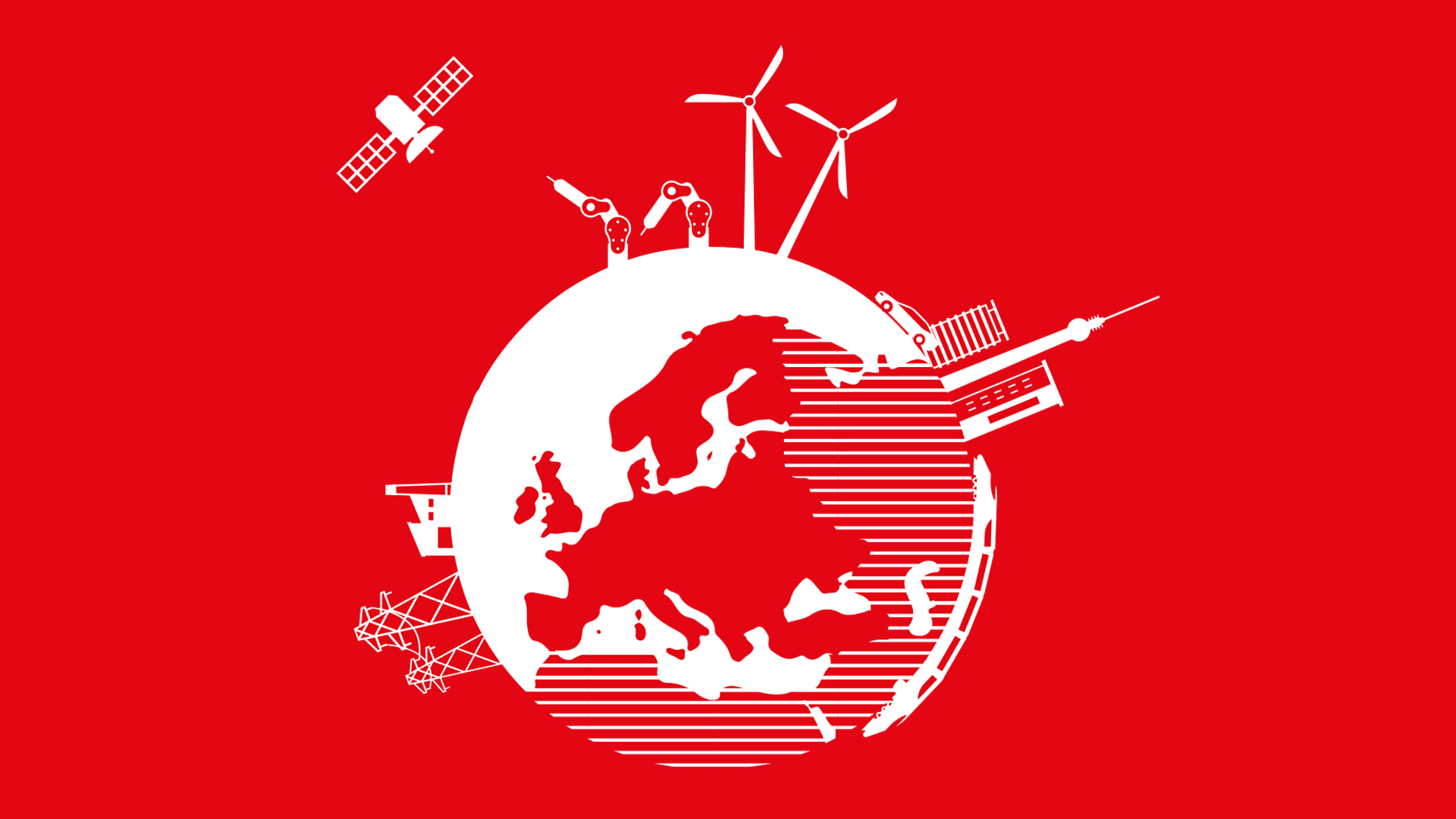Movement
DUISPORT
The port of Duisburg:
21 bays with 40 km of shoreline, 15 km of which features siding. 180 hectares of water, 200 km of track, winding through the port area like veins, and 2 million m² of covered storage area. 130 cranes and 21 gantry cranes. All this makes duisport the biggest inland port in the world. And it is here, right in the centre, that you will find Mitsubishi Electric’s central warehouse – but more on that later.
The ‘currency’ of the logistics industry is TEU. This abbreviation stands for Twenty-foot Equivalent Unit and is equivalent to a small 20 foot container. Large 40 foot containers, exactly 12.192 m in length and the full size of a semi-trailer, are equivalent to 2 TEU. Last year the Port of Duisburg handled 3.6 million of these TEUs. Dispatching all of these containers requires 20,000 ships, 20,000 freight trains and countless HGVs each year. This makes duisport not only the biggest inland port, but also the world’s largest inland container hub. Plus, it holds a respectable position of 41st amongst the largest container ports in the world.
A long jounery…
Like all the 134 million TEUs transported by ship each year, a container arriving in Duisburg has had a long journey. When travelling from East Asia, a container ship takes up to 40 days before it is unloaded in Antwerp, Rotterdam or Hamburg. Because fuel is very expensive, ships travel slowly, saving on both fuel and costs. This in turn means that the transport will take longer. The journey continues on from the large European sea ports, entering the ‘combined’ or ‘trimodal’ transport phase: i.e. either by rail, ship or HGV. The networking of these modes of transport allows goods transport to be set up in a way that is as efficient, resource-sparing and costeffective as possible, depending on the goods in question and the urgency.
 Around the world in 17 days –
Around the world in 17 days –
on the new Silk Road
The ‘new Silk Road’ – the longest stretch of railway in the world – offers faster transport of containers than ships. It begins on the eastern coast of China and ends up in the Port of Duisburg – and this in just 16 days. This provides an alternative for all goods too heavy for air freight but which need to get where they are going faster than is possible by ship. Every day, 75 containers travel the 11,000 km journey on the Trans-Siberian railway to and from China.
The best solution for all
The success of the Port of Duisburg is thanks to its advantageous geographical position on the Rhine in the industrial Ruhrgebiet region, which is close to millions of consumers, and to globalisation and constantly increasing international trade. It is the combination of all of these things that has made it one of the leading logistics hubs and the largest inland hub in Europe. It is also the primary distribution centre for goods coming via the sea ports, which are forwarded from here to their final recipients. Overall, the port generates (including logistics services) a net added value of EUR 3 billion per year, providing 45,000 secure jobs both directly and indirectly: 26,000 more than in the year 2000.
12 million tonnes of coal save the port
If it was not quite by a whisker, it was close: at one time the Port of Duisburg was at risk of drying out due to the dramatic fall in the level of the Rhine, which slowly but surely began to run empty in the 1950s. The measures taken to save the port were typical of the Ruhr region: they simply quarried coal. 12 million tonnes of coal were brought forth from 600 m beneath the earth. While this could be disastrous elsewhere, here it was just what was needed. The land sank by 2 m, allowing the port to become what it is today: a truly superlative logistics hub – or, in short: simply the biggest.
Read more: Mitsubishi Electric and the Port of Duisburg
Changes No. 7
Please click on the picture to open the Changes No. 7.
Download
Download the latest Changes as PDF.
Subscribe
Subscribe for the print edition of our customer magazine “Changes”.



